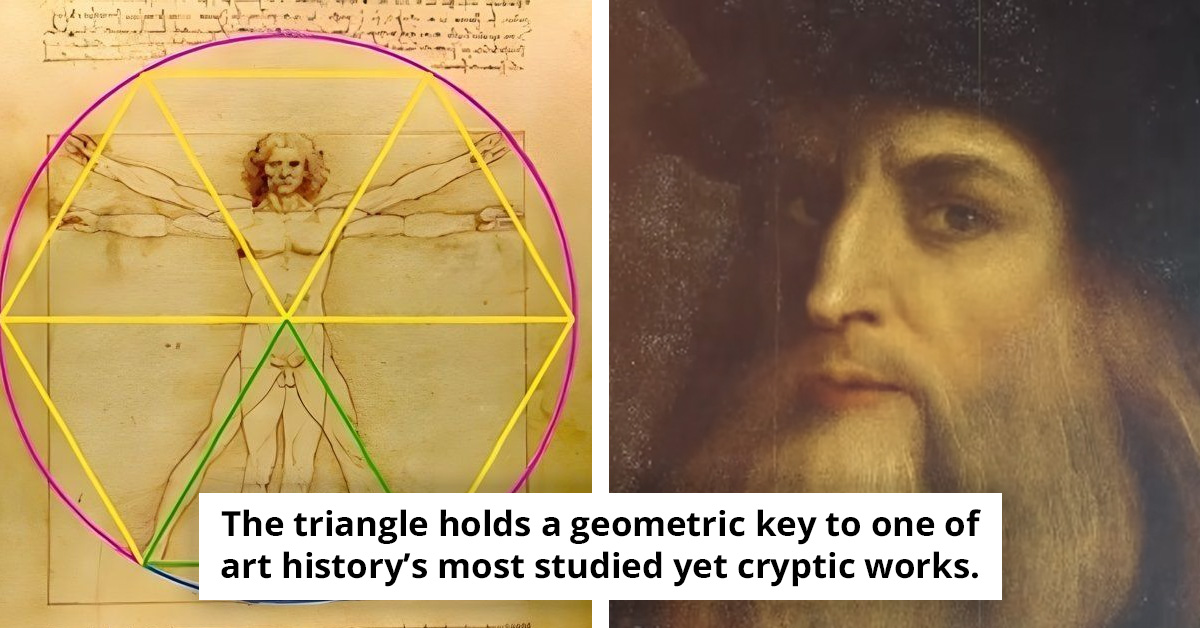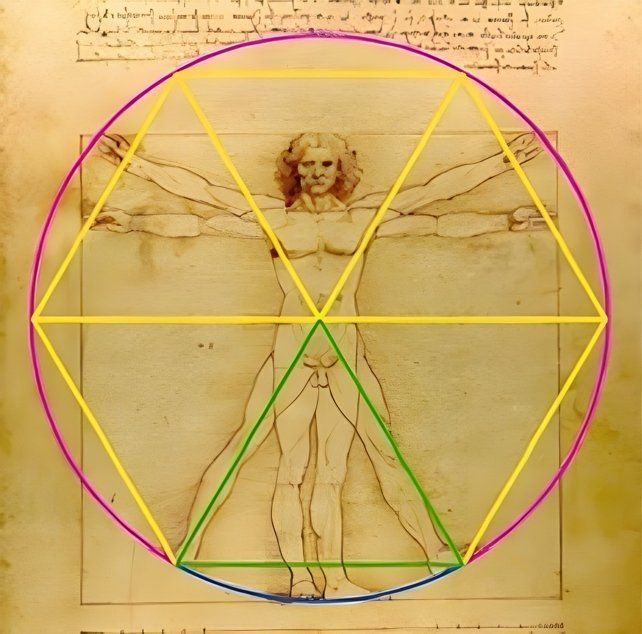500-Year-Old Mystery Hidden in Leonardo da Vinci’s Vitruvian Man May Finally Be Solved
The triangle offers a geometric key to understanding "one of the most analyzed yet cryptic works in art history."

Leonardo da Vinci, the legendary Renaissance artist and inventor, is best known for masterpieces like the Mona Lisa and the Vitruvian Man—the latter being a geometric study of ideal human proportions that has fascinated scholars, artists, and scientists for centuries.
Drawn around 1490, the Vitruvian Man was da Vinci’s visual interpretation of the writings of ancient Roman architect Vitruvius. The famous illustration shows a male figure with outstretched arms and legs fitting neatly within both a circle and a square, representing harmony between art, science, and the human body. But for over 500 years, one detail has puzzled experts: why da Vinci chose specific proportions for the figure’s limbs.
Now, a dentist from London believes he’s uncovered the answer to this longstanding enigma.
Rory Mac Sweeney, whose research was recently published in the Journal of Mathematics and the Arts, claims the secret lies in an equilateral triangle subtly embedded in the drawing’s composition—specifically in the space between the figure’s legs.
According to Mac Sweeney, the triangle offers a geometric key to understanding what he calls "one of the most analyzed yet cryptic works in art history."
The triangle offers a geometric key to understanding "one of the most analyzed yet cryptic works in art history."
 Wikimedia
WikimediaGeometry in Plain Sight
While many have assumed that the Vitruvian Man was based on the Golden Ratio, da Vinci’s measurements don’t actually align with that theory. Mac Sweeney’s approach looked instead at another well-known geometric figure—the equilateral triangle—and found something compelling.
In da Vinci’s own notes, he writes:
"If you open your legs… and raise your hands enough that your extended fingers touch the line of the top of your head… the space between the legs will be an equilateral triangle."Mac Sweeney took this passage literally. By measuring the height from the figure’s navel to the spread of his feet, he calculated a ratio between 1.64 and 1.65. This number is strikingly close to the tetrahedral ratio of 1.633, a mathematical constant used in determining the most efficient way to pack spheres in a given space. Interestingly, this principle wasn't formally recognized until 1917—over 400 years after da Vinci drew the Vitruvian Man.Did Da Vinci Tap Into a Universal Code?
A Hidden Link to Dentistry and Beyond
What does this have to do with dentistry? Quite a lot, according to Mac Sweeney.
In dental science, a geometric measurement known as Bonwill’s triangle has been used since 1864 to determine ideal jaw positioning. Remarkably, the triangle also has a base-to-height ratio of 1.633—the same as the tetrahedral ratio.
Mac Sweeney believes this is not a coincidence.
Taking the theory even further, he suggests that the human body may be shaped by universal geometric principles—the same ones that govern crystal structures, biological systems, and even architectural frameworks like Buckminster Fuller’s geodesic domes.
“Human anatomy has evolved according to geometric principles that govern optimal spatial organization throughout the universe,” Mac Sweeney wrote.“The same geometric relationships that appear in optimal crystal structures, biological architectures, and Fuller’s coordinate systems seem to be encoded in human proportions,” he continued, adding that Leonardo may have intuitively grasped these truths long before they were mathematically defined.If Mac Sweeney’s theory holds up under scientific scrutiny, it could mean that da Vinci—using little more than intuition, a pencil, and deep observation—captured a fundamental truth about the geometry of life. Not just human life, but the way matter and space organize themselves in nature.
And all of it, hidden in plain sight for over five centuries.
Even today, the Vitruvian Man continues to inspire curiosity and awe, proving that da Vinci’s genius still has secrets left to uncover.

